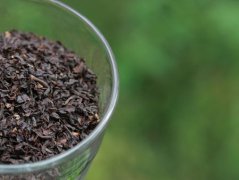The difference between traditional black tea and new craft black tea is which traditional Dianhong or sunburn tastes better.
What is the comparison of tea evaluation? Comparison and evaluation is to soak two or more kinds of tea together to determine the unique characteristics of each kind of tea. This practice helps to compare different brands, harvests and grades of tea. Comparison and evaluation can also help you develop your sense of taste, allowing you to better enjoy the subtle nuances of the characteristics of tea trees. The best tool to identify the flavor of tea is the incense wheel developed by the International Tea Masters Association. Traditional tea vs. How does mixed tea define traditional tea? Although the word has an age-related meaning, for our purposes, traditional tea is defined here as a brew made entirely of real tea, such as our Qimen tea. Although traditional tea has been cultivated for centuries, newer varieties and varieties are also included under this general term. Any tea that contains spices, dried fruits, essential oils and other ingredients is considered mixed tea. Traditional black tea when you think of "tea", the first two kinds of tea you are most likely to think of depend on where you live in the world. Although other types are consumed all over the world, these two types are the easiest to obtain. The next time you enjoy a free drink at your local bank or car dealership, look at the types of tea and you will notice that there are usually black, green, and maybe herbal ones. In addition, when you think of these types of tea, if you are a novice in the world of multi-faceted tea, you may have some basic assumptions: black tea is dark, bitter, heavy green tea is light, botanical, and astringent, although this premise is reasonable, but extracting the types of tea does not leave much room to experience the countless flavors that exist in tea leaves. Black tea is the most heavily processed of real tea, so it tends to be earthy or mineral. However, black tea can also show a lighter flavor, such as nutty or floral aroma, depending on the variety, harvest and soil (the complete environment in which the tea grows). In order to highlight this spectrum, we chose to compare three kinds of traditional black tea from different corners of the world. For comparison, all three kinds of teas were soaked at 212 °F and 100 °C for 4 minutes.

Guatemalan black tea, a unique tea with a distinct mineral flavor, is reminiscent of granite. Guatemalan black is characterized by a mild taste that is strong enough to resist milk and honey. Himalayan black tea is at the other end of the black tea taste spectrum. We have Himalayan black tea, which provides a unique floral choice. Himalayan black tea is a kind of light black tea with a slight astringent taste, which makes the taste lasting and increases the depth. This tea shows the top notes of garden flowers and remains stable, with subtle grapefruit and citrus flavours. We recommend soaking this tea in a traditional cover bowl to fully appreciate the taste produced after soaking for a short time. Kenyan black tea our Kenyan black tea comes from Milima Manor in southwestern Kenya and provides good medium grinding between the other two kinds of tea. Kenyan black medium-bodied copper glass with floral and slightly sweet malt flavors. This tea tastes long and slightly astringent. Try sipping coffee as part of your morning habit, or as a caffeine pick-me-up around 3 p.m.!
Important Notice :
前街咖啡 FrontStreet Coffee has moved to new addredd:
FrontStreet Coffee Address: 315,Donghua East Road,GuangZhou
Tel:020 38364473
- Prev

What kind of tea is Oriental Beauty Tea? Taste characteristics of Oriental Beauty Black Tea with White Heart and White leaves in Taiwan
Citrus wood rattan, also known as Baixin or white leaves, is a late-growing black tea variety with medium tree type, dense branches and leaves, yellow bud color, oval to Obovate leaves and more flowers. This variety was planted in Taoyuan, Hsinchu and Miaoli in the early days, but now it has passed Jiazi's old tea trees, but black tea was exported to Taiwan in the past.
- Next

Is Assam milk tea made in India? Introduction to the Origin of the Historical Story of Assam Black Tea in India
For centuries, black tea was considered to be Chinese territory until a new variety was discovered in India. Assam black tea rose to fame and quickly became the main competitor of China's tea monopoly. Nowadays, Assam black tea is popular because of its chocolate taste and rich taste. Black tea not only tastes good
Related
- Brazilian coffee yellow bourbon brewed flavor characteristics and origin share! What grade is red bourbon coffee?
- How to judge the roasting degree/concentration/filtration method of coffee beans from the color of coffee soup? What is the difference between dark and light roast coffee?
- Why are the coffee in some coffee shops not enough after being frozen? What should I make up for my American latte cappuccino coffee after being frozen?
- How much water does it take to steam coffee by hand? Why is the coffee brewing and steaming time 30 seconds? What is the purpose of steaming coffee?
- The suspected drink contains too much caffeine! Overlord Tea Lady responds urgently!
- Starbucks rejects antique paper coupons?! Netizen: Missed marketing opportunities!
- What ratio of water temperature and ground does the smart cup method use to press coffee? The difference between brewed coffee and filtered coffee?
- What is the standard process for the purpose of coffee cup testing? What is the difference between hand-brewed coffee and cup testing?
- How to use hand-brewed coffee paragon small golden balls? How does cold coffee lock in the aroma of coffee?
- Is American coffee black? What is the difference between American coffee and drip coffee?

